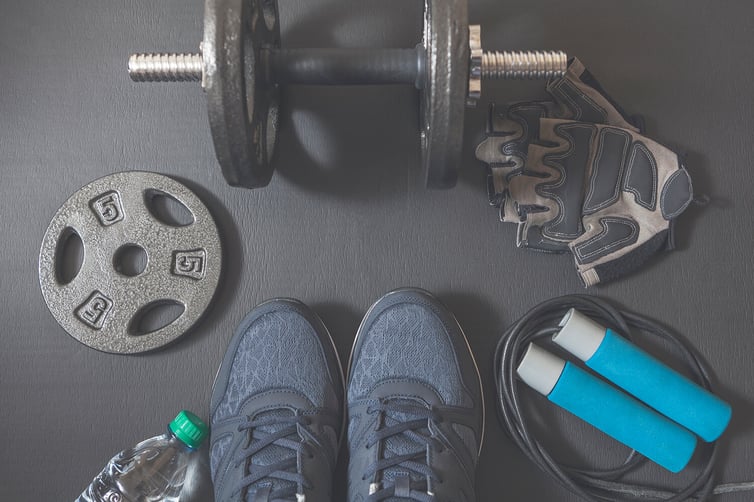“Lifting heavy weights will make me bulky”
“Early morning, fasted workouts makes for greater fat loss”
“Cardio is the only way to lose weight”
“I can spot reduce by doing specific exercises that target the desired body part”
“Rest days are not necessary and will set me back further from my goals”
Have you ever subscribed to any of these claims? If you have, you are certainly not alone. These exercise myths have circled around today’s fitness culture for quite a long time and have time and time again tripped up even the most seasoned gym-goer. So let’s go through the myths one by one and bust each one wide open!
Myth 1: “Lifting heavy weights will make me bulky”
Fact: This particular myth is primarily held onto by women who believe that in order to achieved that “toned” look, they can only lift light weights for many repetitions because the heavier the weight, the bulkier they will get. However, it is not as simple as that. Women do not have the same makeup as men to actually build massive amounts of muscle, and those women seen in bodybuilding photos who do have been purposely training and supplementing in such way to produce large muscle mass.
Let’s break this down a bit further. Building muscle involves the breakdown and rebuilding of muscle fibers and requires calories to do so. If you take in too many calories on a daily basis, your body will not only build muscle, but also gain fat. As you gain lean muscle tissue, but continue to have more and more adipose tissue encompassing it, you will most certainly start to see an increase of body circumference measurements.

If you feel you are getting bulky from weight lifting, take a look at your caloric intake to ensure you are not eating excess calories. However, if you are eating within your body’s daily caloric needs, you won’t suddenly look in the mirror to find that you have turned into the Hulk overnight.
Muscle growth takes time, dedication, and consistency, so don’t worry about lifting heavy! Incorporating two or three days of strength training per week will actually boost your metabolism, build lean muscle, and even prevent osteoporosis to help you achieve that toned physique and improved health.
Myth 2: “Early morning, fasted workouts make for greater fat loss”
Fact: Although the thought behind this one might seem to make sense, your body does not burn any more body fat by working out in the morning versus later in the day because it still depends on overall calories consumed and calories burned. You could work out early in the morning as much as you want, but if you are still eating more calories than you are burning, you will gain body fat.
Furthermore, the goal of regular exercise is to continue to increase the intensity through progressive overload to encourage strength adaptations; but, if you choose to work out early in the morning in a fasted state, your body will burn through available glycogen stores and actually start to dip into your muscle for energy. This encourages a catabolic effect as the amount of tissue proteins are burned for energy during your workout. This is the exact opposite of what we want!
The moral of the story is to work out when it fits your schedule best and when you feel the strongest. If working out in the morning is most convenient for you and you feel great doing so, keep it up! But if you only force yourself to workout fasted early in the morning because you think it will bring results quicker, then make the switch to a better time of the day for you as this will encourage long lasting results and a sustainable workout routine.
Myth 3: “Cardio is the only way to lose weight”
Fact: Cardio work burns calories fairly quickly, so it would make sense to think the more cardio you do, the more weight you will lose. Although that is a true statement that cardio burns calories and can help with weight loss, it isn’t the only way to lose weight.
Too much cardio can actually inhibit weight loss as your body becomes more efficient at performing the activity in a process called metabolic adaptation. This results in needing fewer calories to maintain that intensity level and required recovery, thus slowly reducing the received benefits from engaging in that particular activity. Too much prolonged cardio can also push the body to tap into muscle mass for sustained energy, which also negatively impacts metabolism speed as fewer calories are needed to fuel muscle tissue.
Incorporating strength training can also lead to weight loss as your resting metabolic rate increases through the building of lean muscle mass, thus requiring your body to work a bit harder to recover in between workouts. Cardio may burn calories during the workout itself, but once the activity is done, caloric expenditure drops back to its resting rate fairly quickly.
In contrast, strength training not only burns a lot of calories during the actual workout, but due to “excess post-exercise oxygen consumption” (or EPOC), your body will continue to burn calories as it slowly returns back its normal, resting metabolic function (or homeostasis).
In short, the more intense your activity, the more your body will be required to burn calories to maintain its stable internal environment. So push yourself! Go hard! Aim for a combination of both modalities in your exercise routine in order to achieve your weight loss goals most efficiently (with a high, nutrient dense eating approach of course).
Myth 4: “I can spot reduce by doing specific exercises that target the desired body part”
Fact: If only the human body worked as individual parts, losing body fat would be much easier! You would be able to pinpoint the exact spots where you would like to lose weight and then perform exercises to do so. However, this just isn’t how it works.
As you work out and are in a caloric deficit, you cannot decide where your body fat is reduced first, as that is pre-determined by your genetic makeup and body chemistry. For example, doing core exercises target and strengthen the muscles beneath the body fat, but does not attack the encompassing body fat itself. To see a reduction in desired areas you must focus on whole body fat loss that results from living an active lifestyle and eating a minimally processed, well-rounded diet.

Just as previously discussed in the “cardio is the only way to lose weight” myth above, your focus should be on putting enough stress on your body through a combination of cardio and full-body strength training to require a higher caloric expenditure to maintain internal homeostasis and promote recovery between workouts.
So focus on strengthening those large muscle groups and getting your body moving every single day (even on rest days) as that will encourage the tightening of those “trouble areas.”
Myth 5: “Rest days are not necessary and will set me back further from my goals”
Fact: If working out a little bit is good, then working out a lot is great…right? Well, not exactly. Your body needs to recover in between each workout in order to rebuild to be stronger, faster, and more efficient than before. So if you are constantly breaking down your muscles every single day, recovery can become impaired making progress even more difficult to achieve.
Taking rest days does not mean you have to sit on the couch all day eating junk food. Going for a walk, taking a hike, or playing in the park with your family will get your blood flowing a little and enhance the recovery process that your body most definitely needs.
Using your extra time to cook up healthy meals and food for the rest of the week will fuel your body with the nutrients needed to recover and assist you in reaching your goals. So take that rest day to fuel up, take a breather, and prevent burnout because you might be surprised at how much quicker you see results.
Conclusion
So there you have it―some of the most popular myths have been busted wide open! The moral of the story is don’t believe every fitness claim you read, see, or hear. Do your own research. Consider the source. Determine its accuracy. Don’t fall prey to these claims!
Establish a routine that follows the ACSM recommended guidelines of 150 minutes of aerobic activity and 2 days of strength training per week to achieve balance in your fitness, health, and exercise goals. Use the F.I.T.T. principle which stands for frequency, intensity, time, and type to steadily increase different variables of your workout to promote continuous results and prevent possible plateaus, burnout, or boredom.






